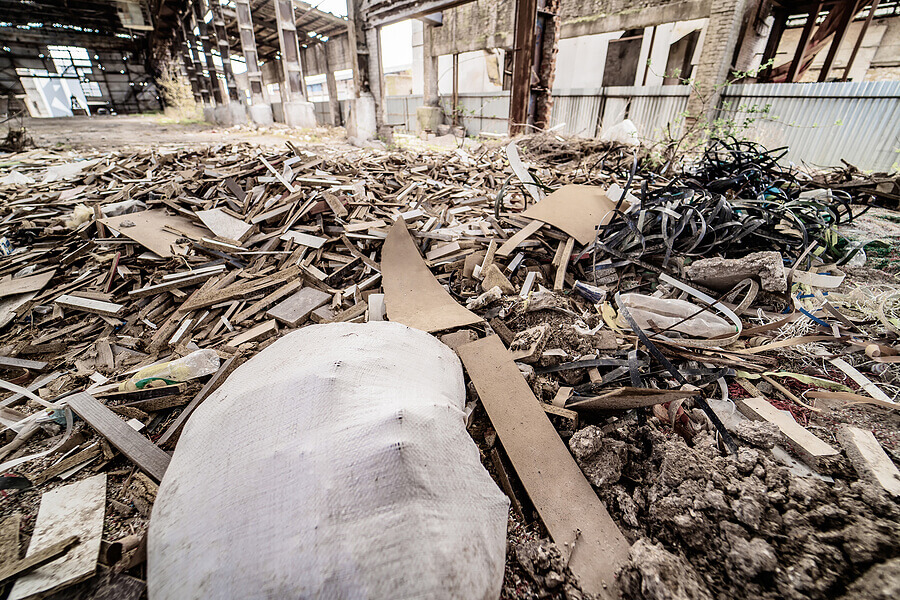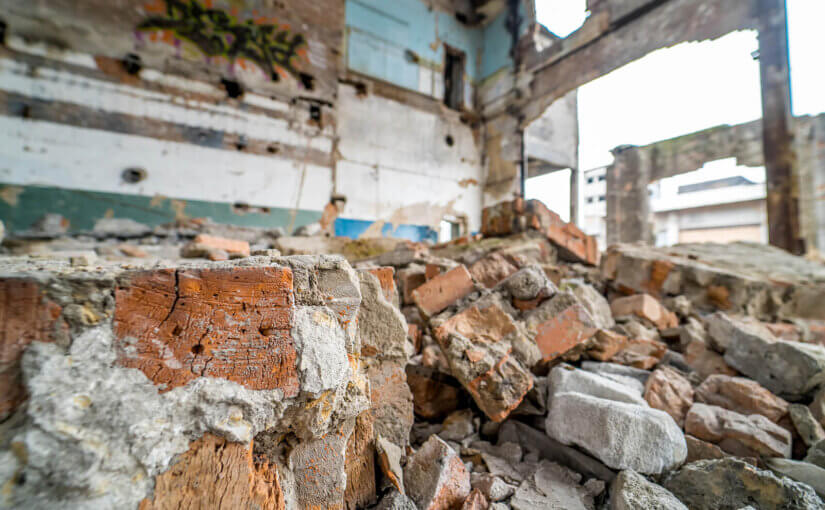Construction waste is generated on any sized building project and, if improperly managed, has detrimental effects on the environment and your finances.
Managing and minimising your construction waste is crucial in ensuring a more sustainable building site, and it means you also do your bit to protect the planet and its resources.
The impact of construction waste
Construction waste has several negative impacts on both the environment and society.
Around 32% of landfill waste comes from construction sites and demolition projects, while around 13% of the items sent to building sites go directly to landfills without being used.
Over time, landfills release harmful greenhouse gases, such as carbon dioxide and methane, which speed up climate change if uncontrolled.
Construction waste in landfills impacts natural habitats, altering nearby fauna and flora, contaminating soil and water, and leaving animals and insects without a place to live.
Throwing away valuable construction materials increases the need for new items, straining natural resources. The production and transportation of said materials further generates greenhouse gases and impacts the environment.
Improperly stored construction waste is a possible eyesore, affecting the aesthetic appeal of a neighbourhood or local community.
From a business perspective, construction waste is a huge financial expense, and the cost of improper construction waste disposal and the purchasing of new materials is a preventable expenditure.
Understanding the sources of construction waste

Construction waste comes from any building project, whether a local home remodelling or a large-scale site.
Waste from these locations can come from a variety of sources, including:
- Unused or surplus building materials
- Demotion and excavation waste
- Unused or expired building equipment and supplies
- Packing materials
- Hazardous materials, such as asbestos or lead-based paint
- Waste from workers on construction sites, such as food waste, packaging, etc.
Although items like bricks, drywall, wood or concrete are some of the most popular construction waste materials, it’s essential to consider all the waste your building project generates. Proper waste management in construction is crucial for an efficient and safe site.
Understanding the source of construction waste can help identify how to minimise output and reuse and recycle certain items.
Best practices for on-site construction waste management
There are several ways to minimise construction waste and develop a more sustainable building project.
Have a waste management plan
Establishing a construction helps control on-site waste so everyone knows specific waste disposal processes and procedures.
Track your waste
Tracking and measuring your construction waste output not only identifies areas to improve but also allows you to determine the success of your reduction effects.
Sort items
Encourage workers to sort waste on-site, separating items into recyclable and nonrecyclable materials. This makes it easier to reuse and recycle, ensuring fewer items end up in landfills.
Minimise packaging
Consider switching to building materials with less packaging or opting for more sustainably transported supplies.
Store waste properly
Properly storing waste prevents litter and promotes a safer building environment. Hiring a skip is a great construction waste disposal option and ensures your items enter the correct waste stream.
Educate workers
Educating site workers on the importance of construction waste reduction leads to more effective waste management, as they are more likely to adopt sustainable practices.
How to reuse and recycle construction waste materials
Reusing or recycling construction waste is surprisingly easy.
Some large projects utilise on-site recycling, such as using crushed concrete for road bases or broken bricks for retaining walls. Other items, including metal, wood, and plastic, are sent to off-site facilities, where it’s recycled and turned into other valuable products.
You can donate unused building materials in good condition to local charities or non-profit organisations, which are used to build shelters and facilities for needy people.
Some homeowners repurpose their construction waste materials, for example, using old doors as wall dividers or roof tiles as flooring. This is a cheap and unique way to remodel your home.
How does skip hire minimise construction waste?
A skip is a great way to minimise the construction waste of medium to large building projects.
Storing your waste in one area ensures a safer site and allows construction waste removal companies to recycle and dispose of your materials properly.
Segregating your waste into different materials, such as wood, metal, concrete, or plastics, is easily achievable when hiring a skip. You can isolate recyclable materials to be easily reused for another project or purpose.
A large skip minimises the need for multiple trips to recycling facilities or waste sites, therefore reducing the likelihood of illegal fly-tipping. Simply let your skip hire company know when your container is full, and they will collect your construction waste.
